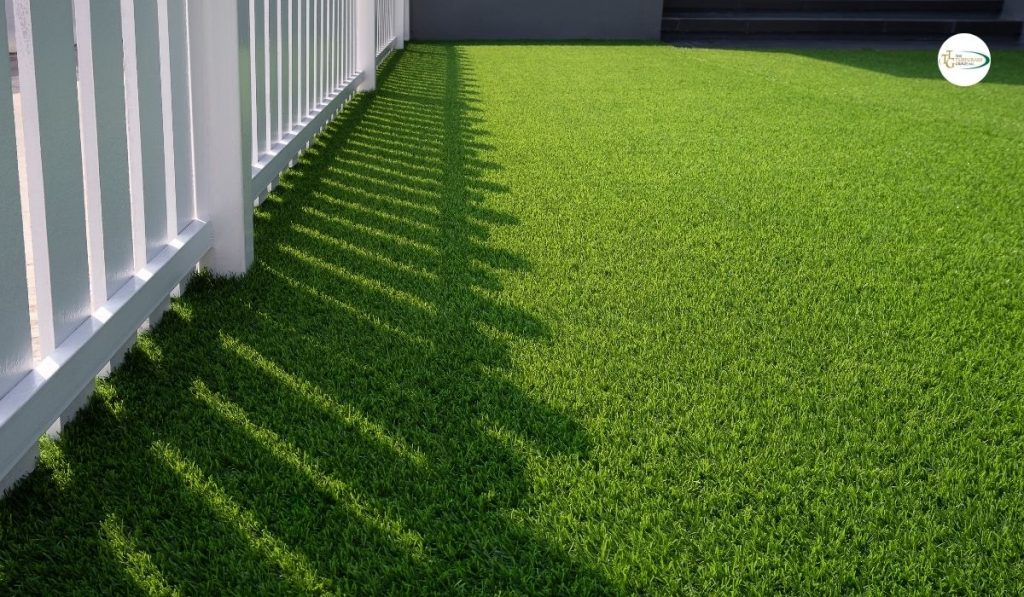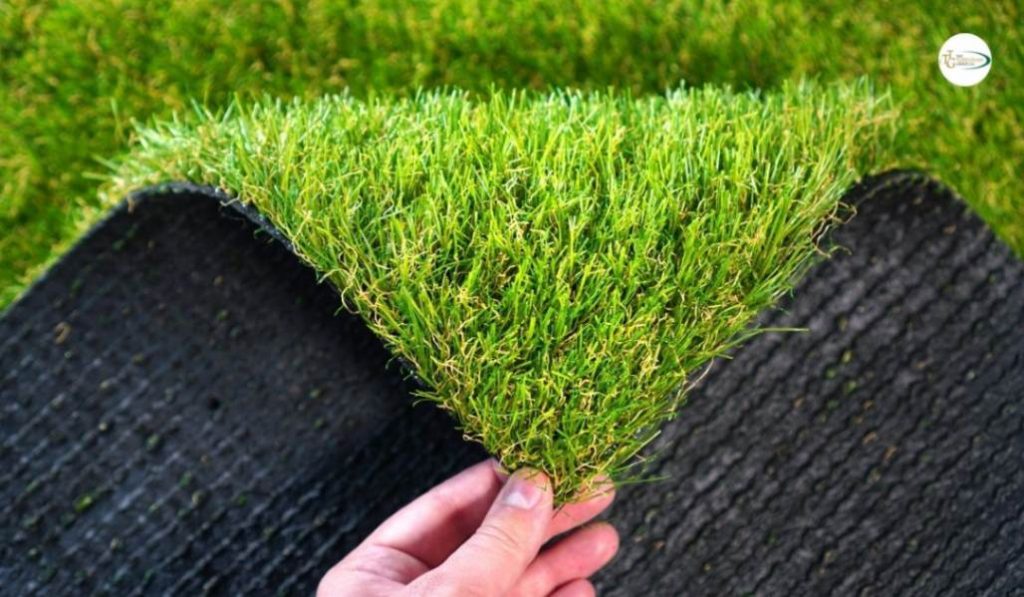
Turf management is both an art and a science, requiring careful attention to detail and a deep understanding of plant biology, soil composition, and environmental factors, including effective turf troubleshooting.
Turf professionals, whether they are responsible for maintaining golf courses, sports fields, or residential lawns, often encounter various challenges that can affect the health and appearance of turfgrass.
In this article, we will explore some of the common issues faced by turf professionals and discuss practical solutions to address them.
Soil Compaction:
Soil compaction is a widespread problem in turf management, especially in high-traffic areas such as sports fields and golf courses.
Compacted soil restricts root growth, reduces water infiltration, and limits nutrient uptake, leading to poor turf health and performance.
To alleviate soil compaction, turf professionals can implement practices such as core aeration, which involves removing small plugs of soil to improve air and water movement in the soil profile.
Additionally, incorporating organic matter through topdressing or compost applications can help loosen compacted soil and promote healthier turf growth.

Thatch Accumulation:
Thatch is a layer of dead grass stems, roots, and organic debris that accumulates on the soil surface over time.
While some thatch is beneficial for turf health, excessive buildup can hinder water and nutrient penetration, create an ideal habitat for pests and diseases, and impede root development.
To manage thatch accumulation, turf professionals can utilize mechanical dethatching equipment to remove excess debris and encourage decomposition.
Implementing proper mowing and fertilization practices can also help minimize thatch buildup and promote a healthy balance of organic matter in the soil.
Pest Infestations:
Pests such as insects, weeds, and diseases can wreak havoc on turfgrass if left unchecked.
Common turf pests include grubs, chinch bugs, and fungal pathogens, which can cause widespread damage and compromise turf quality.
Integrated pest management (IPM) strategies are essential for effectively controlling pest infestations while minimizing environmental impact.
This approach may include cultural practices such as mowing at the correct height, promoting good soil drainage, and selecting disease-resistant turfgrass varieties.
In some cases, targeted pesticide applications may be necessary, but these should be used judiciously and by local regulations.
Nutrient Deficiencies:
Proper nutrition is crucial for maintaining healthy turfgrass and ensuring optimal growth and development.
Nutrient deficiencies, such as nitrogen, phosphorus, and potassium, can manifest as yellowing or stunted growth and may result from poor soil fertility, improper fertilization practices, or environmental factors.
Soil testing is a valuable tool for assessing nutrient levels and guiding fertilizer recommendations based on specific turfgrass needs.
Turf professionals should follow best management practices for fertilization, including proper timing, application rates, and nutrient balance, to prevent deficiencies and promote vigorous turf growth.
Environmental Stress:
Turfgrass is susceptible to various environmental stressors, including drought, heat, cold, and excessive shade, which can weaken turf’s health and make it more vulnerable to pest infestations and disease outbreaks.
To mitigate environmental stress, turf professionals can implement irrigation management strategies to ensure adequate soil moisture levels during periods of drought or high temperatures.
Shade-tolerant turfgrass species may be selected for areas with limited sunlight.
At the same time, proper cultural practices such as aerating, overseeding, and mulching can improve soil health and resilience to environmental pressures.
Water Management:
Proper water management is essential for maintaining healthy turfgrass, as both under-watering and over-watering can have detrimental effects on turf health.
Inadequate irrigation can result in drought stress, leading to wilted, brown turf, while excessive watering can promote shallow root growth, disease development, and nutrient leaching.
Turf professionals should implement efficient irrigation systems and schedules based on factors such as soil type, weather conditions, and turfgrass water requirements.
Techniques such as deep watering, cycle and soak irrigation, and using moisture sensors can help optimize water use and minimize runoff and waste.
Turfgrass Selection:
Selecting suitable turfgrass species and cultivars is crucial for achieving the desired aesthetic and functional qualities in various turf settings.
Factors such as climate, soil conditions, sun exposure, and intended use should be considered when choosing turfgrass varieties.
For example, warm-season grasses like Bermuda grass and Zoysia grass thrive in hot, humid climates.
In contrast, cool-season grasses such as Kentucky bluegrass and fescue are better suited to cooler regions.
Turf professionals should also assess factors like traffic tolerance, disease resistance, and maintenance requirements when selecting turfgrass species to ensure long-term success and sustainability.
Traffic Management:
High-traffic areas pose unique challenges for turf professionals, as constant foot traffic or equipment use can compact soil, wear down turfgrass, and create unsightly bare patches.
To manage traffic stress, turf professionals can implement strategies such as installing designated walkways or paths to redirect foot traffic away from sensitive turf areas.
Additionally, utilizing durable turfgrass varieties with high traffic tolerance and implementing proper maintenance practices such as overseeding and topdressing can help minimize wear and promote recovery in high-traffic zones.
Environmental Sustainability:
In today’s environmentally conscious landscape, turf professionals are increasingly embracing sustainable practices to minimize resource consumption, reduce environmental impact, and promote ecosystem health. Sustainable turf management practices may include:
- Reducing water usage through rainwater harvesting and efficient irrigation systems.
- Implementing integrated pest management (IPM) strategies to minimize pesticide use.
- Incorporating organic fertilizers and soil amendments to improve soil health and fertility.
Turf professionals can also adopt cultural practices such as mulching clippings and promoting biodiversity to enhance ecosystem resilience and support beneficial wildlife.
Continuing Education and Professional Development:

In an ever-evolving field like turf management, staying abreast of the latest research, technologies, and best practices is essential for turf professionals to excel in their roles.
Continuing education opportunities, such as workshops, seminars, and certification programs, provide turf professionals with valuable knowledge and skills to enhance their expertise and problem-solving abilities.
Engaging in professional organizations, networking with peers, and seeking mentorship opportunities can also foster collaboration and innovation within the turf industry, ultimately benefiting turf professionals and the communities they serve.
Conclusion
Turf management presents a myriad of challenges for turf professionals, but with careful observation, proactive planning, and practical problem-solving strategies, these challenges can be overcome.
By addressing common issues such as soil compaction, thatch accumulation, pest infestations, nutrient deficiencies, environmental stress, water management, turfgrass selection, traffic management, and ecological sustainability, turf professionals can maintain healthy, vibrant turfgrass that enhances the beauty and functionality of outdoor spaces for years to come.
With a commitment to continuous learning and adaptation, turf professionals can navigate the complexities of turf management and achieve success in their endeavors.
For personalized assistance and expert guidance in overcoming turf challenges, contact us at The Turfgrass Group.
With our expertise and dedication, we’re here to support you in achieving your turf management goals.
FAQs
What is soil compaction, and how does it affect turfgrass?
Soil compaction occurs when soil particles are pressed tightly together, restricting air and water movement within the soil profile. This can hinder root growth, nutrient uptake, and water infiltration, ultimately leading to poor turf health. High-traffic areas like sports fields and golf courses are particularly susceptible to soil compaction.
What are some solutions for alleviating soil compaction?
Turf professionals can implement core aeration, a process that involves removing small plugs of soil to improve soil structure and promote better air and water movement. Incorporating organic matter through practices like topdressing or compost applications can also help loosen compacted soil and encourage healthier turf growth.
What is thatch accumulation, and why is it problematic for turfgrass?
Thatch is a layer of dead grass stems, roots, and organic debris that accumulates on the soil surface over time. While some thatch is beneficial, excessive buildup can hinder water and nutrient penetration, create a habitat for pests and diseases, and impede root development, leading to turf health issues.
How can turf professionals manage thatch accumulation effectively?
Mechanical dethatching equipment can be used to remove excess thatch and encourage decomposition. Additionally, proper mowing and fertilization practices help minimize thatch buildup and maintain a healthy balance of organic matter in the soil.
What are some common pest infestations that turf professionals encounter?
Turf pests include insects like grubs and chinch bugs, as well as fungal pathogens that can cause diseases such as brown patches and dollar spots. If left unmanaged, these pests can cause widespread damage and compromise turf quality.
How can turf professionals control pest infestations while minimizing environmental impact?
Integrated pest management (IPM) strategies involve a combination of cultural practices, such as promoting good soil drainage, selecting disease-resistant turfgrass varieties, and targeted pesticide applications when necessary. IPM aims to manage pests while minimizing reliance on chemical treatments effectively.
Why is proper nutrition essential for turfgrass health?
Nutrients like nitrogen, phosphorus, and potassium are essential for turfgrass growth and development. Nutrient deficiencies can result in yellowing, stunted growth, and overall poor turf health, affecting its appearance and performance.
How can turf professionals ensure optimal nutrient levels for turfgrass?
Soil testing is a valuable tool for assessing nutrient levels and guiding fertilizer recommendations based on specific turfgrass needs. Following best management practices for fertilization, including proper timing, application rates, and nutrient balance, helps prevent deficiencies and promote vigorous turf growth.
What are some everyday environmental stressors that turfgrass faces?
Turfgrass is susceptible to environmental stressors like drought, heat, cold, and shade, which can weaken its health and make it more vulnerable to pest infestations and disease outbreaks.
How can turf professionals mitigate environmental stress for turfgrass?
Implementing irrigation management strategies, selecting shade-tolerant turfgrass species, and practicing cultural methods like aerating and mulching can help mitigate environmental stress and promote healthier turf growth.